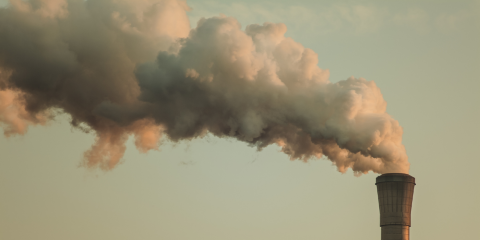The export effect

How shipping LNG offshore hit eastern Australia’s gas demand … and prices
Key Takeaways:
Gas demand in Australia’s eastern states – excluding gas used for LNG production – has fallen by 32% since its peak in FY2012-13.
This fall follows a 40-year period of continuous increase; the turnaround coincided with the start of LNG exports from Queensland in 2015, which drove a tripling in gas prices.
Gas demand for power generation is down almost 60% while gas demand for manufacturing has fallen to a 31-year low, mostly due to plant closures.
The fall in demand happened as gas production rose by a factor of 2.8, with LNG production soaking up new gas supplies. Across Australia, the LNG industry uses 80% of all gas produced
10 December 2024 (IEEFA Australia): Since Australia started exporting LNG in 2015, gas demand in the eastern states has plunged while prices have tripled, according to a new report released today.
Excluding the gas used to produce LNG itself, demand for gas in eastern Australia dropped to a 25-year low in FY2023-24, and has dropped 32% in a decade, the report LNG exports prompt fall in eastern Australia’s gas demand finds.
After 40 years of sustained demand growth, the major consuming sectors – manufacturing, electricity and residential – have all been switching off gas. The sharp turnaround coincides with the start of LNG exports from Gladstone in Queensland, say the authors, IEEFA’s Australian gas finance analyst Kevin Morrison and IEEFA Australia chief executive Amandine Denis-Ryan.
“Since LNG exports began, average gas prices have tripled due to the stronger linkage between LNG export prices and domestic gas prices,” Mr Morrison says.
“Correspondingly, the largest gas use reductions came from the electricity and manufacturing sectors, which tend to be more price sensitive.
“Prices are likely to remain higher than pre-2015 levels for decades.”
In manufacturing, gas demand dropped 24% from FY2013-23 as local petroleum refineries closed, and minerals and chemicals processors and small manufacturers were hit by tough economic conditions, including higher gas prices.
Across the national electricity market (NEM), which covers the eastern states, gas demand fell almost 60% from FY2013-24 amid the surge of renewable energy connecting to the grid. Renewables’ share of the energy mix almost quadrupled from 10.4% to 38.1% while the amount of gas used in power generation more than halved from 11.5% to 5% in that time.
In homes, Victoria, which accounts for about two-thirds of eastern Australia’s household gas demand, led the decline, which is likely influenced by milder weather, electrification policies and high gas prices.
Meanwhile, the evaporating gas demand has largely been absorbed by the gas industry itself, as 8-10% of the gas used to make LNG is consumed in the liquefaction process and in piping the source coal seam gas (CSG) hundreds of kilometres to LNG export facilities. Australia-wide, LNG production is now the largest user of gas, ahead of electricity generation and manufacturing.

“Across the whole of Australia, the LNG industry uses 80% of the gas produced in the country,” Ms Denis-Ryan says.
“Eastern Australia’s gas production has risen 2.8 times since LNG exports started from Gladstone, from an average of 1,930 terajoules a day (TJ/d) in January 2015 to 5,490TJ/d in June 2024.
“This means the increase in total east coast output has effectively been directed to the three Queensland LNG export plants, given the decline in domestic gas use.”
Further falls in gas demand are likely in manufacturing, power generation and the residential market due to high prices, more competitive alternatives and government policy incentives, the authors say.
Read the analysis: LNG exports prompt fall in east Australia’s gas demand
Media contact: Amy Leiper, ph 0414 643 446, [email protected]
Author contacts: Kevin Morrison, [email protected]
About IEEFA: The Institute for Energy Economics and Financial Analysis (IEEFA) examines issues related to energy markets, trends, and policies. The Institute’s mission is to accelerate the transition to a diverse, sustainable and profitable energy economy. (ieefa.org)












